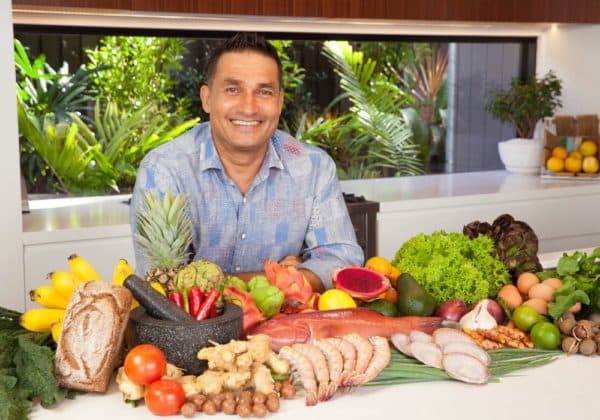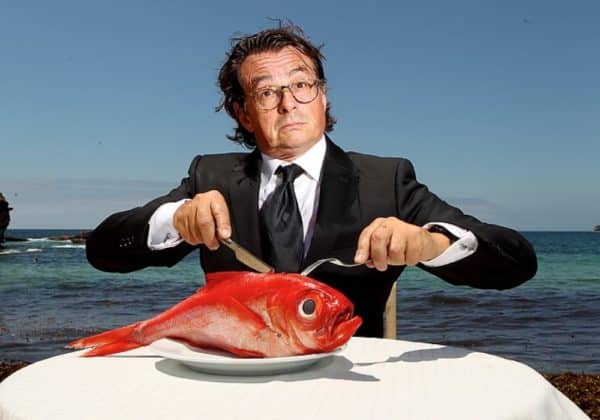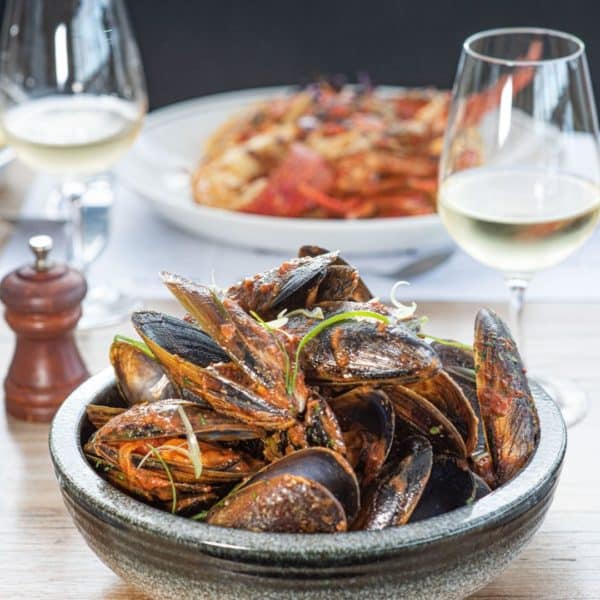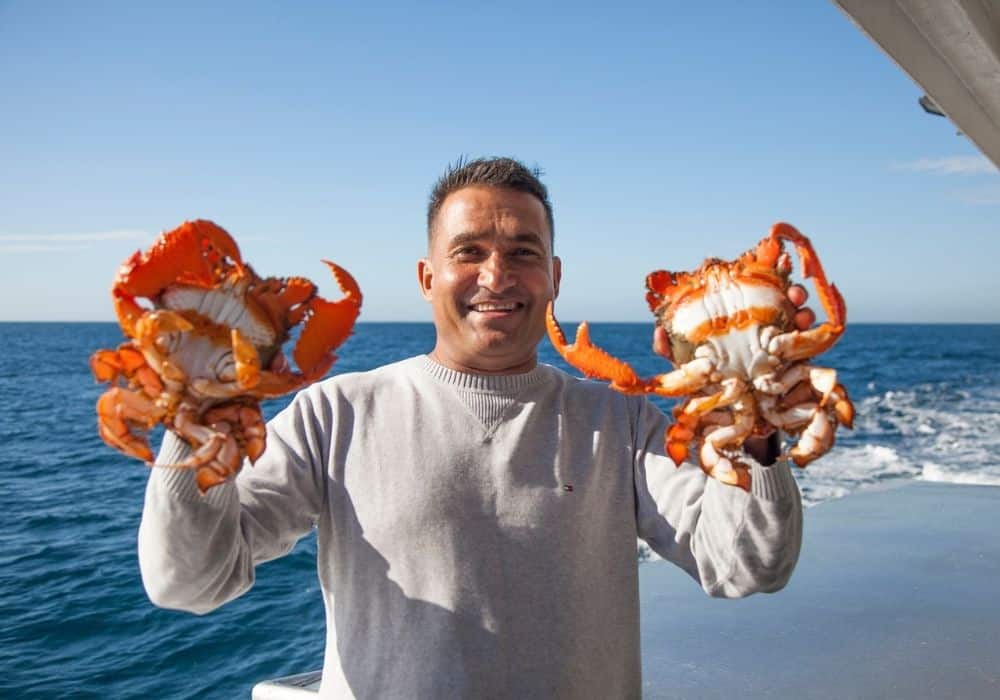Smart Seafood
Choosing the right fish can be a minefield in the hospitality game as more diners demand super-fresh, local seafood with a good story attached.
So how do you choose seafood that’s sustainable for both the environment and your bottom line? And is frozen seafood the way to go?
Food writer Richard Cornish asks experts for their take on this slippery issue and discovers some of the best value seafood in Australia.
______________________________________________
Australians love seafood. They also love Australian seafood. But they also love the idea of doing the right thing when it comes to protecting our nation’s waterways and fish stock.
Research by the Fisheries Development and Research Corporation shows that Australian consumers have more than a passing interest in where their fish comes from and if it is sustainable. There are many ways we as an industry can engage in sustainable seafood that will also help our businesses be more economically sustainable. Going green doesn’t mean going into the red. As chefs and business owners we can make changes that look after the seas and look after our bottom line. It comes down to a few points: we can be flexible about the species we serve; we can aim to get more value from whole fish; we can be clever as chefs and make dishes that make the most of our precious seafood.
“Some of our best seafood is frozen,” says celebrity chef Peter Kuravita. From his kitchen overlooking the Pacific Ocean at Noosa Beach House in Queensland, he told Fine Food that he has no problems using frozen seafood, especially as it can cut down on food wastage at sea and on land.

Peter Kuravita – internationally renowned chef, restaurateur, television presenter and author.
“Prawns, wild caught at sea, can be quick frozen and packed withing 30 minutes of harvest,” he says. “They cook, look and taste better than ‘fresh’ prawns that may have been refrigerated for days on end.
“We have some of the best seafood in the world here in Australia. It is up to us in the hospitality industry to get our customers to engage with sustainable seafood, local seafood, seasonal seafood. We need to educate ourselves so we can educate our customers. Speak to your fishmonger, look at the information that is available and tell your customers.” Kuravita offers some great insights into using frozen seafood on this podcast.
One of the nation’s best seafood communicators is Sydney seafood guru John Susman from marketing company Fishtales. He has noticed a rise in the old-fashioned use of whole carcass seafood skills.
“We really are at the renaissance of smart seafood,” says the Sydney seafood guru. “For people working in the restaurant game, we are witnessing chefs buying whole fish from the fishmonger and making a profit from every single part of the fish.”

John Susman – seafood Guru and owner of Fishtales.
Susman points to Sydney fish chef Josh Niland’s new cookbook Take One Fish which includes dishes like tuna mayo tufu make from minced offcuts of tuna, or gravy made from fried flounder bones. One spectacular but simple dish is a soft white bread sandwich filled with a succulent coral trout fillet and its super crisp skin.
“Take salmon,” says Susman. “A whole salmon. If we want to get value for our businesses, we need to consider every part of that fish.” The glamourous centre cuts, he says, can be cooked in the pan and finished in the oven as usual. He says the belly can be sliced fine and used in stir fry, while the tail can be stuffed with herbs, trussed with string, roasted and served as a dish to share. “The head can be hot roasted and served as part of tasting menu (cheeks are delicious). We’re seeing fried wings as a bar snack.”
Susman says chefs and diners are becoming more sophisticated in their tastes, accepting more and different ways of enjoying seafood. He refers to chefs taking fish frames, roasting them, smoking them and pulverising them with salt as a seasoning. “That is a lot of value from one fish,” he says. “Sustainable also means affordable. To everyone.”
When it comes down to simple dishes like fish and chips, avoid sticking to one species. Punters love flathead, which is a moderately sustainable fish, but the price of this consumer favourite rises and falls. Buy it in when it is at the bottom of the cycle and highlight it as a special. At other times, other species from sustainable farmed barramundi or sand or school whiting caught off southeast Australia can be championed in large turnover venues. Some of these species are delivered fresh, some frozen.
Do not be caught in the vortex of media about “fresh is best”. Snap frozen seafood is of better quality than fresh fish that has been slopping about cool room for several days.
Prawns
Extreme weather this season has knocked about the wild prawn population, so expect higher prices for wild prawns from Spencer Gulf to the Gulf of Carpentaria. Look for farmed Australian Tiger Prawns from northern New South Wales and coastal Queensland. They all have the highest rating from Best Aqua Culture Practices (BAP). Also, have a look at school prawns from regional fisheries. Fried whole they represent 100 per cent recovery and can be purchased under $15/kg.
King Trout
In some markets, due to negative media, Tasmanian salmon has lost its allure. Consider Victorian King Trout. These rainbow trout grow to 5-7kg in fresh running water. The flesh is deep red orange, marbled with fat and super tasty with the tang of fresh water. They’re also incredibly versatile in the kitchen.
Oily Fish
Every chef in the nation has caught on to the flavour and health properties of Spanish Mackerel, but it can be overpriced. Try its cheaper cousin, Spotted Mackerel, which cooks as well and can handle strong flavoured sauces. When it comes to tuna, Yellow Fin is well recognised, but consider using its cheaper cousin Albacore Tuna. It is a beautiful meaty fish and some fisheries are certified by the Marine Stewardship Council.
Calamari
Calamari and its cousins like squid and cuttlefish breed rapidly and are not considered endangered. Every customer wants the soft and succulent calamari but, because of this, it has become costly. Consider the more affordable arrowhead squid and the meatier cuttlefish. All are considered sustainable, but can be a third less costly than calamari. Look to Italian and French recipes for inspiration.
White Octopus
A new fishery for white octopus has opened in Victoria offering great value fresh octopus. Tentacles are always popular in Italian, Greek and Spanish dishes but consider the heads which are often misunderstood. Mince them for Japanese Takoyaki or stuff minced octopus into cleaned heads, season, poach, chill and slice for octopus terrine.
Mussels
Blue mussels are an Australian native and farmed in coastal waters in southern Australia. Being filter feeders, they improve water quality in the bays and coastlines where they are farmed. They’re also versatile, delicious and excellent value for money.

Image taken at The Rocks Mornington.
Other Fish
Thread fin salmon is a fish from Australia’s northern waters and has been described as poor man’s barramundi. It is available in 5kg frozen shatter pack boxes at prices under $10. Thaw it overnight, brine it, dry it and treat it like barramundi.
If you want to learn about sustainable seafood from the seafood industry and the seafood conservation groups head to these websites.

Journalist Richard Cornish has been writing about Australian food and drink for almost three decades, amassing a cult following for his weekly column in The Age and Sydney Morning Herald. Richard has also co-authored best-selling books with MoVida’s Frank Camorra and bakery doyen Phillippa Grogan.
-
Stay up to date with the latest news, industry insights and Fine Food Australia updates.
- Subscribe
